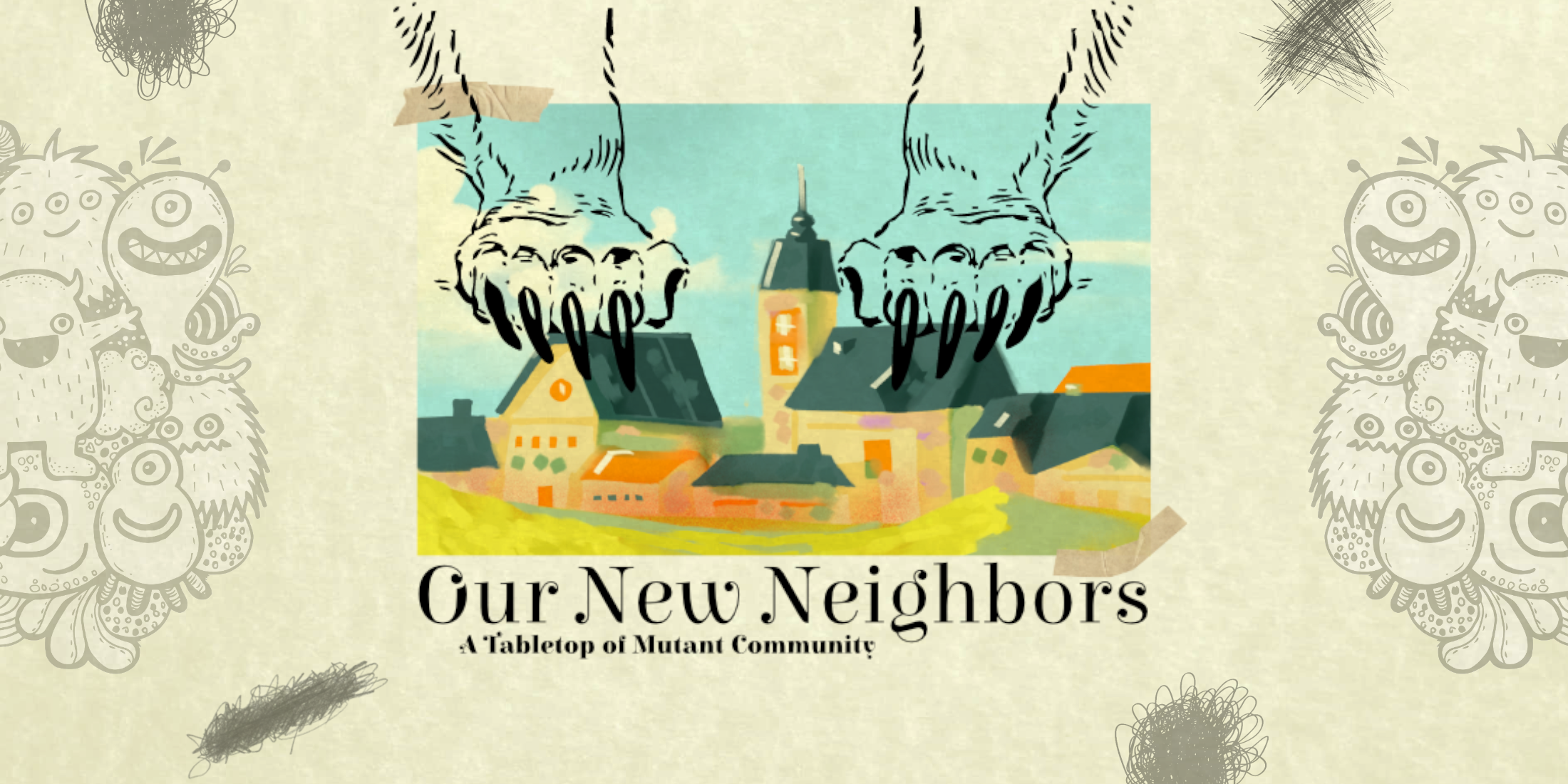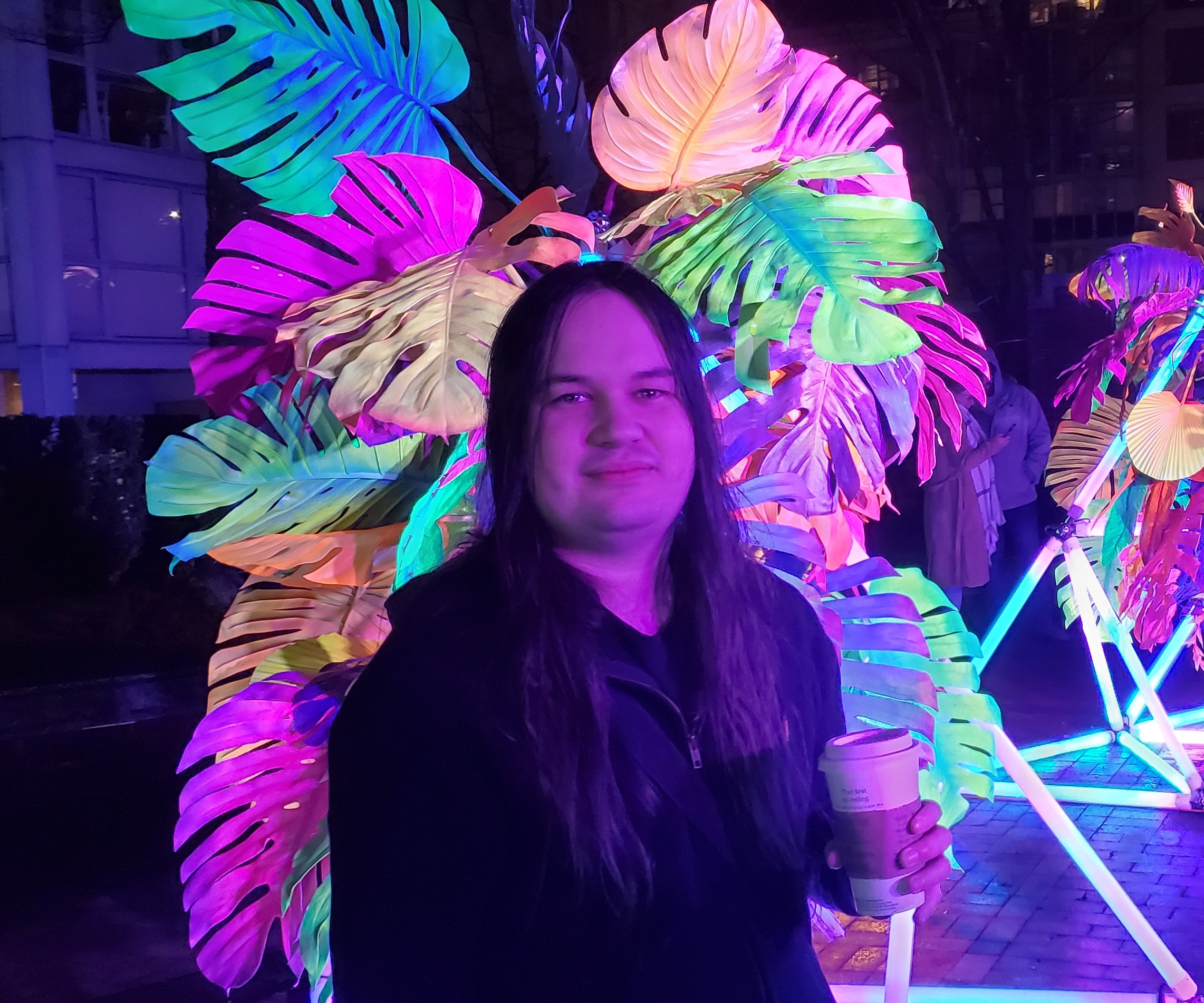What would happen if monsters suddenly started appearing around your town?
How would people react if a weird creature walked into your local Walmart to pick up a crate of eggs and a pack of toilet tissue?
What would people say if they spotted an ogre rolling through the drive-thru, keen to order a burger with extra pickles?
Our New Neighbors takes this popular fantasy and urban fantasy trope and turns it into a fantastic world-building game. However, unlike similar titles, Our New Neighbors doesn’t shy away from the darker side of the concept, leading to a massively improved play experience.
The Brilliant Design Of Our New Neighbours

The game’s inventive design becomes apparent right from the start, as the first stage has players build the location by rolling dice across the playing surface. Where the dice come to rest represents a cluster of houses or a specific business within the village, and the dice’s upward-facing number represents how the people in that area feel about the Mutants. The higher the number, the friendlier and more open the locals are to the town’s new inhabitants. Plus, the number of sides on the dice represents how quickly those people’s opinions will change, with smaller-sided dice representing areas that adapt quickly.
Once the location is made, it is time to move the Mutants in. These Mutants have four needs: Shelter, Food, Play, and Mutagen. The final one is the most interesting as it covers the special thing your Mutants need to maintain their bodies, from nuclear waste to specific wavelengths of life.
After you complete these stages, the players start to tell stories using the village and the Mutants that now reside there. This part of the game is built around a series of individual events, each generated by drawing two cards from the deck.
The first card tells players what Needs the Mutants are trying to meet. The player who draws the card selects a location on the map, decides how the Mutants are going to try and meet the Need, and then compares the value on the dice with the value on the card to find if the Mutants’ have a positive or negative experience meeting their Need in that area. The second card, dubbed the Deed card, covers an event that happens. This could be anything from the Mutants getting blamed for a horrible event to an environmental change forcing the mutants to prioritize specific needs.
Depending on how each Need or Deed card resolves, players will either increase or decrease the dice on the map, representing the local population’s changing attitudes to Mutants. From here, the game continues to follow this pattern, with players expanding the story and managing the Mutant’s needs until all the cards are gone from the deck. At this point, the players write an epilogue for the village and its Mutants, reflecting on how far they’ve come.
Our New Neighbors’ World Building Doesn’t Shy Away From Difficult Topics

Our New Neighbors is a fantastic world-building game, both mechanically and thematically. The game has a beautiful structure, giving players space to be creative while constantly pushing them forward and maintaining a sense of stakes. The best example of this is the Needs system, as it forces players to think tactically to make sure that they’re prioritizing the Needs that are not currently being met. This means that every turn feels crucial to the ongoing story, especially because one mishandled Need could set off a chain-reaction of issues for the Mutants and the people of the village, side-stepping a common problem found in many other world-building games, where some turns feel like they add little to the overall narrative.
The best thing about Our New Neighbors is how it spotlights how hard it can be to integrate into a new community. In many similar games, the creatures get instantly accepted by the vast majority of the community, with only the story’s villains having issues with them past the first act.
Our New Neighbors dice system also highlights that people moving into a community must deal with a wide range of positive and negative reactions. The dice system further builds on this point, showing that becoming part of a new community requires lots of time and effort.
However, the most upsettingly realistic thing about the game is how it illustrates that people’s opinions of outsiders are often not based on facts. While trying to meet their needs, the Mutants will frequently find their attempts at being friendly or helpful go wrong, leading to people disliking them despite the Mutant’s good intentions. This is intensified by the events found in the Deeds table, as many of them feature humans attacking the Mutants without provocation or people blaming the Mutants for things outside of their control.
So, while the game excels as a world-building game, it can also be used as a jumping-off point for discussions about discrimination, integration, and othering as it allows players to put themselves in the shoes of an othered group and viscerally feel their struggles.
Our New Neighbors stands head and shoulders above many other world-building games available. Its clever mechanical design makes it accessible to everyone but deep enough to keep players engrossed the entire game. Plus, its decision not to shy away from the struggles of integration gives it immense depth and emotional impact, meaning players will be pondering the game and the story they created long after the session ends. Due to this, Our New Neighbors is a must-play world-building game for fans of the genre.


